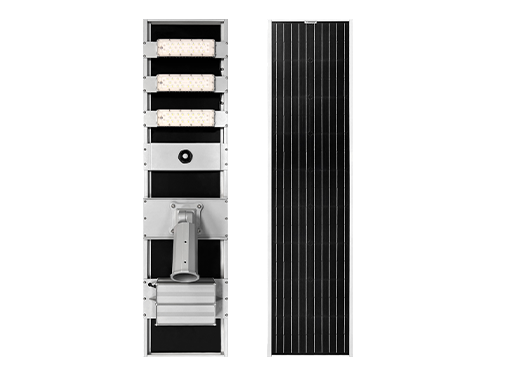
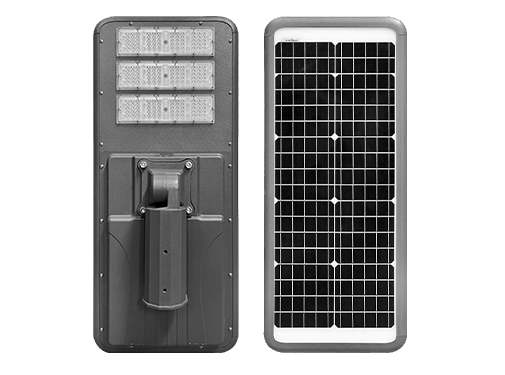
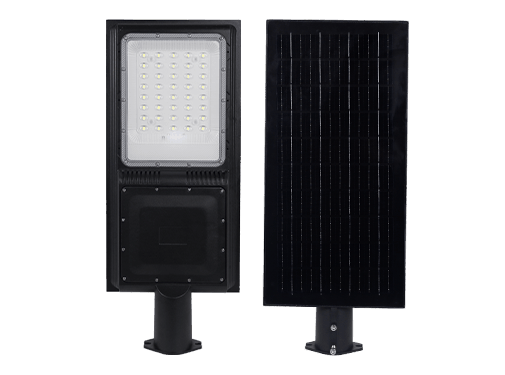
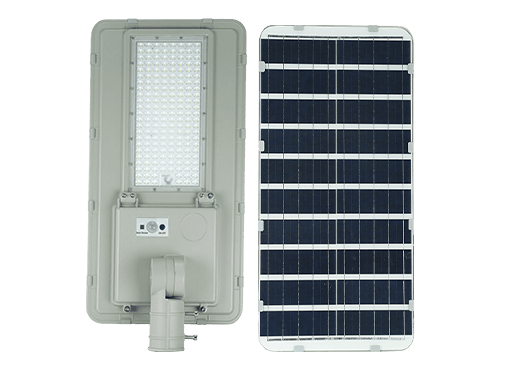
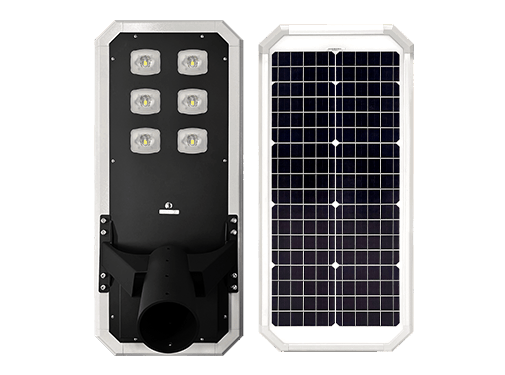
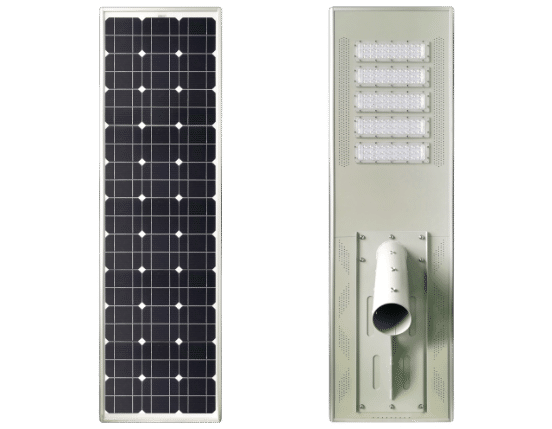
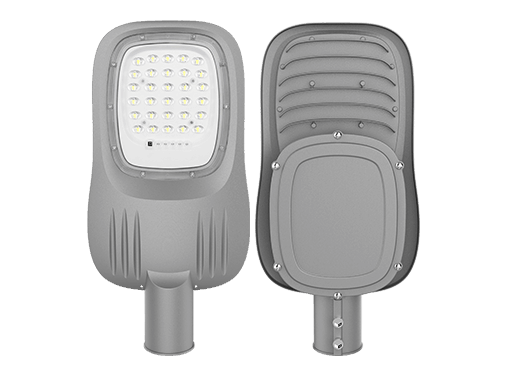
.png)
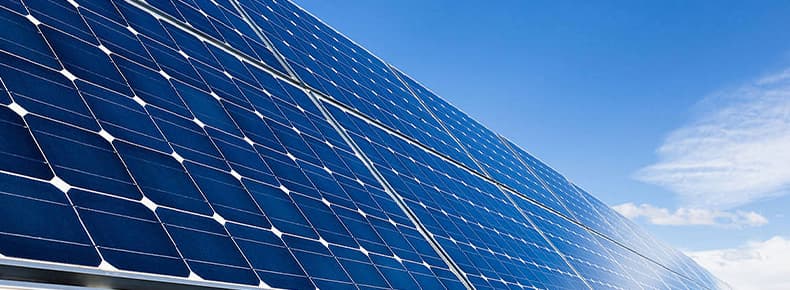


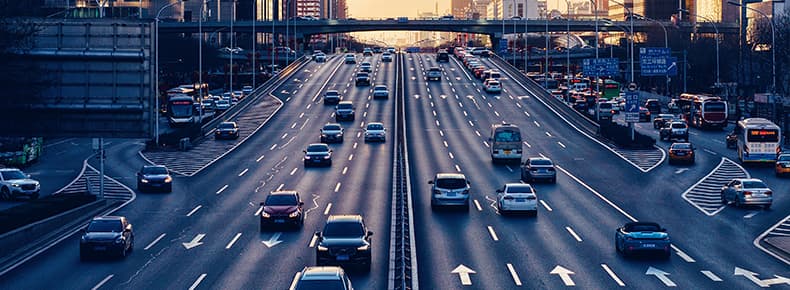
The VillageSolar Street Light utilizes Epistar LED chips, which enable it to emit 5000 - 6000 lumens of superior brightness, bringing sufficient and high-quality lighting to the countryside at night. At the same time, the chip has an extremely long service life, greatly reducing the need for frequent replacement of lamps and providing a long-lasting and stable light source for village lighting.
Solar street lights utilize solar power, a feature that brings significant energy-saving benefits to the countryside. On the one hand, it greatly reduces the expenditure on electricity, alleviating the economic burden of the countryside; on the other hand, the use of clean energy, which is in line with the concept of environmental protection, significantly reduces carbon emissions, helping the countryside to realize green development.
High-quality materials: its lamp body is made of high-quality aluminum alloy. Aluminum alloy has excellent durability and can withstand various harsh environments. At the same time, its good heat dissipation performance effectively extends the service life of the lamp.
Protection grade: It reaches IP65 protection grade, which means the street light can resist the intrusion of water and dust in all aspects. Whether it's pouring rain or sandy and dusty days, it can work normally, which is very suitable for the complex and changing outdoor climate conditions in the countryside.
In remote villages, where electricity infrastructure is often inadequate, the autonomous power supply function of solar street lights is particularly important. It does not need to rely on the power grid, and can realize independent and stable lighting only by the energy collected by solar panels, bringing light to the countryside at night.
Offers two color temperature options, white and warm white. White light is clear and bright, suitable for roads, parking lots and other areas that require high visibility; warm white light creates a warm and comfortable atmosphere, which is more suitable for parks, residential areas and other places to meet the lighting needs of different Villageenvironments.
Road lighting: Whether it is the main road or the branch road in the countryside, solar street lamps can provide reliable lighting and guarantee the safety of villagers traveling at night.
Public area: installing solar street lights in parks and gardens not only facilitates villagers' leisure and entertainment, but also adds charm to the countryside at night.
Building periphery: used for external lighting of buildings to enhance the recognizability and safety of the building.
|
Streetlight Type |
Energy Source |
Advantages |
|
Solar Streetlight |
Solar Energy |
Clean and environmentally friendly, inexhaustible and sustainable, reduces dependence on traditional energy sources. |
|
Traditional Streetlight |
Grid Electricity |
Relies on limited traditional energy sources, and the power generation process may cause environmental pollution. |
|
Streetlight Type |
Installation Cost |
Maintenance Cost |
Electricity Cost |
Other Potential Costs |
|
Solar Streetlight |
Relatively high, but no need for complex wiring |
Low, high equipment stability |
None |
Almost none, reduces risk of cable theft |
|
Traditional Streetlight |
High, requires laying cables and installing transformers |
High, equipment is prone to aging and damage |
High |
Potential losses due to cable theft |
Solar street lightsusually use a low voltage of 12V or 24V, while traditional street lightsuse a high voltage of 220V or 110V. The lower voltage greatly reduces the risk of overheating and electric shock, especially in Villageenvironments where people are more active.
|
Streetlight Type |
System Characteristics |
Installation Flexibility |
|
Solar Streetlight |
Independent System |
Not restricted by the power grid, can be installed anywhere with sunlight. |
|
Traditional Streetlight |
Relies on Power Grid |
Installation must follow power grid distribution, limited by grid coverage and relevant regulations. |
Solar street light installation is relatively easy, requiring only the construction of a concrete foundation and a battery pit, and then fixing the street light. In contrast, traditional street light installation requires a lot of manpower and resources and involves complex work such as cable laying and circuit debugging.
Traditional street lightsare usually brighter. However, to achieve higher brightness, solar street lights need to be equipped with more powerful solar panels and batteries, and the corresponding cost will increase. However, through reasonable design and configuration, solar street lights can also meet the lighting needs of different scenes in the countryside.
The initial purchase cost of solar street light is higher, but in the long run, its comprehensive cost is comparable to that of traditional street light. Although the initial purchase cost of traditional street lights may be lower, a large amount of money needs to be invested in infrastructure construction at the time of installation, and costs continue to be incurred for maintenance and electricity expenses in the later stages.
In towns and Villageroads, where lighting needs are relatively less high and farther away from power sources, laying cables is costly. Therefore, solar street lightsare a more suitable choice to effectively solve lighting problems and reduce costs.
For the road is wide, the need for street lamp height of more than ten meters, the traditional street lamp can provide more adequate lighting. In the village road with the height of the street light lower than ten meters, the solar street light can well meet the demand.
Taking common village roads as an example, the width of village roads is mostly in 4 - 6 meters, often installing 4 - 6 meters high solar street lamps, such as 6 meters high street lamps are commonly configured as 30W, but the actual project mostly adopts 3.2V leveling system, with a maximum power of about 20W.
After simulation, the 6 meters 20W solar street lamps are installed at a spacing of 5 meters and 30 meters, the average illuminance is 5.29, and the uniformity is 0.077, which is unable to meet the requirements of the national standard for village trunk and branch roads. The average illuminance is 5.29 and the uniformity is 0.077 under 5m road and 30m spacing.
The power will be adjusted to 30W, in 6 meters wide road, equal spacing 28 meters under the conditions, can meet the village road average illuminance 8lux, uniformity 0.3 requirements. The specific parameters of solar street lamps for different road types are as follows:
|
Road Type |
Road Width / Pole Height |
Lamp Spacing |
Light Source Power |
Total Luminous Flux |
|
Village Main Road |
6/6 |
25 |
30W |
49151 lm |
|
Village Branch Road |
5/5 |
30 |
20W |
33501 lm |
|
Village Alley Road |
4/3 |
15 |
6W |
10681 lm |
Budget planning
The prices of villagesolar street lights on the market vary greatly, ranging from 300 to 400 yuan to more than 2,000 yuan. The following is a reasonable budget reference for different roads:
|
Rural Road Level |
Specification |
Price Range (Affected by Sunlight Resources) |
|
Main Road |
6m 30W |
171 - 257 USD |
|
Branch Road |
5m 20W |
100 - 157 USD |
|
Alley Road |
6W Wall-mounted Solar Streetlight |
42 - 85 USD |
Configuration selection
The recommended configurations for solar street lights for different rural road grades are as follows:
|
Rural Road Grade |
Light Source Power & Luminous Flux |
Solar Panel Power (Varies with Sunshine Resources) |
Lithium - battery Power (Varies with Sunshine Resources) |
|
Trunk Road |
30W 4910lm |
80W - 160W |
380WH - 510WH |
|
Branch Road |
20W 3350lm |
50W - 90W |
170WH - 320WH |
|
Alley |
6W 1068lm |
20W - 50W |
80WH - 160WH |
Since 2008, the rapid development of the renewable energy sector, the demand for solar street lights has increased dramatically, and many related companies have emerged in the market. Some companies may attract customers with extremely low prices and quick solutions, but such responses often lack detail and accuracy.
When choosing avillagesolar street light, it is important to study the lighting system requirements in depth to ensure that the other party fully understands and meets their needs. Nokin, for example, has an experienced team of engineers, designers and business people who can work together to discuss and provide the best solution.
Professional solar street light manufacturers should provide clear and reasonable warranty terms. Some companies do not fulfill the warranty promise or even disappear after selling the products, so be sure to ask about the warranty content.
If conditions permit, you should go to the factory for a field trip. Observing the production line with your own eyes is a good way to determine the reliability of the company, and Nokin welcomes customers to visit the factory, and can also arrange team exchanges for customers to discuss the details of the project in depth.
Product quality can be understood through customer evaluation and project cases. If there are no relevant cases to show, you need to be careful in choosing. Before placing an order, you should ask for test samples. Nokin has cooperated with many customers and has rich project experience, and there is no minimum order requirement, so it is convenient for customers to test the products first.
solar street light system transactions are different from the sale of ordinary goods, from design to after-sales service, Nokin's Central Europe team can provide customers with a full range of services, at any time to solve customer problems.
Villagesolar street lights are better than traditional street lights in many ways due to their energy efficiency, durability and environmental friendliness, and there are suitable options for different budgets, installation locations and height requirements. When selecting, you need to consider the brightness demand, budget, configuration and other factors, and choose a reliable solar street lightmanufacturer. We believe that solar street lights will bring a brighter, greener and better future for the countryside.